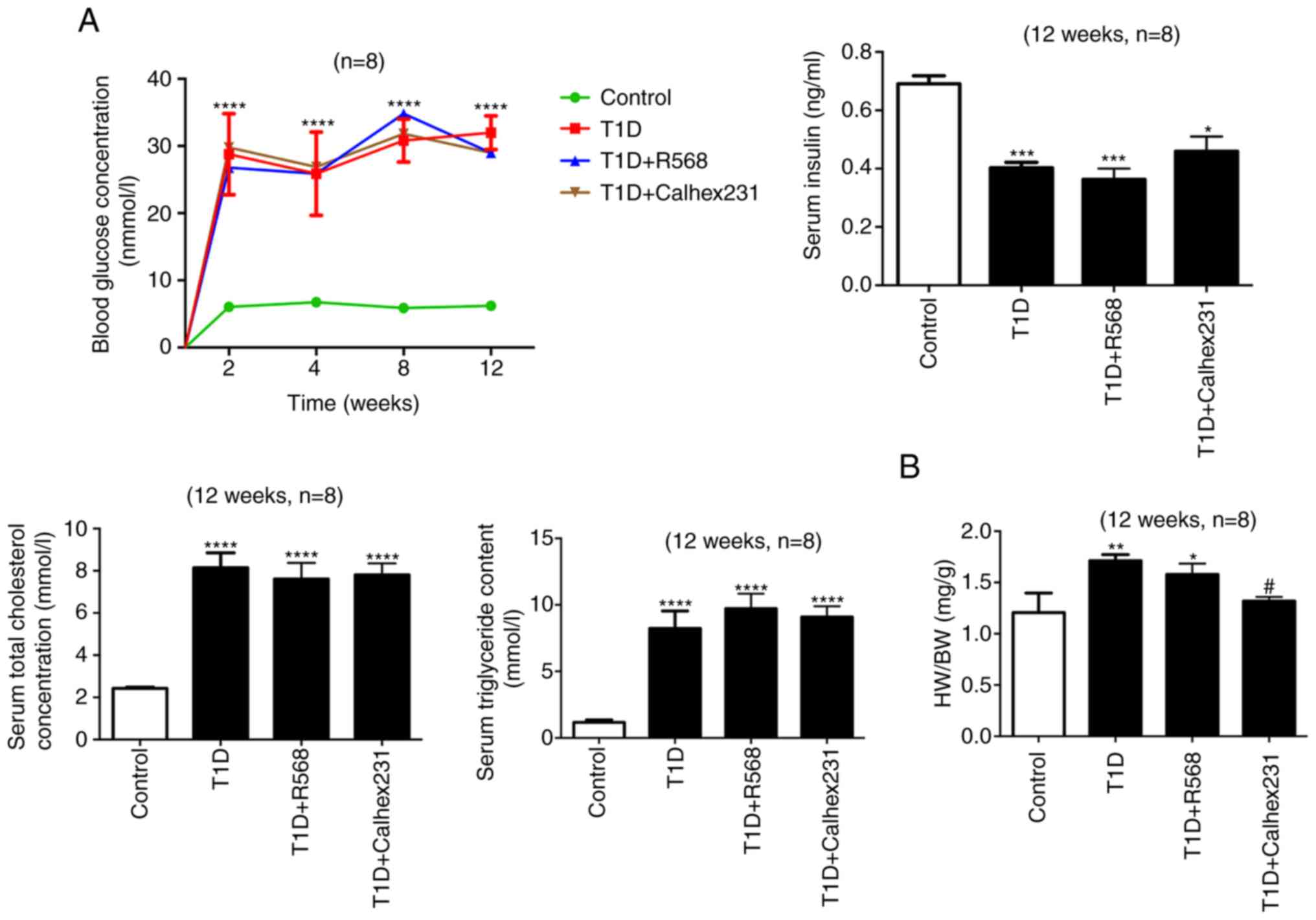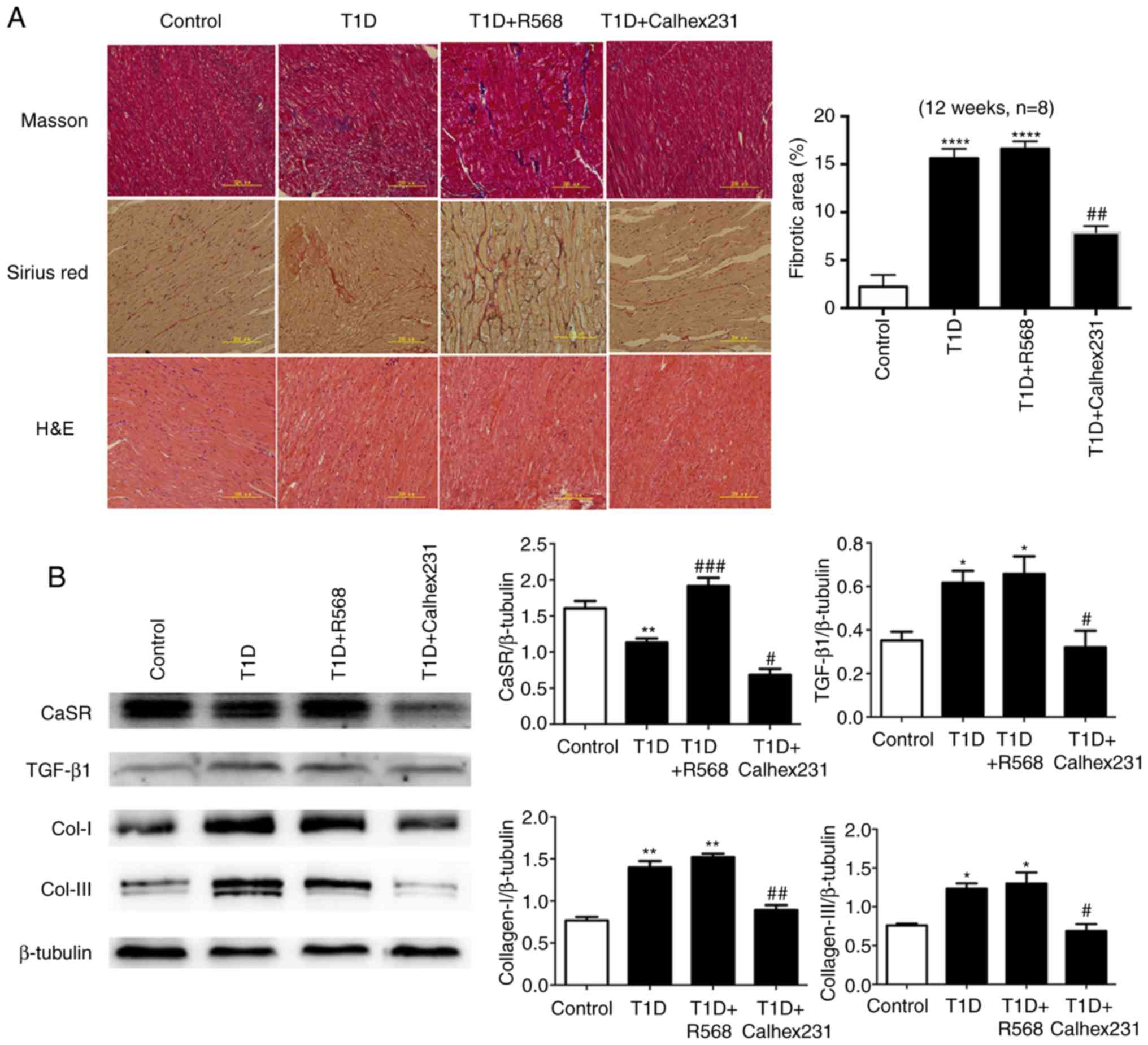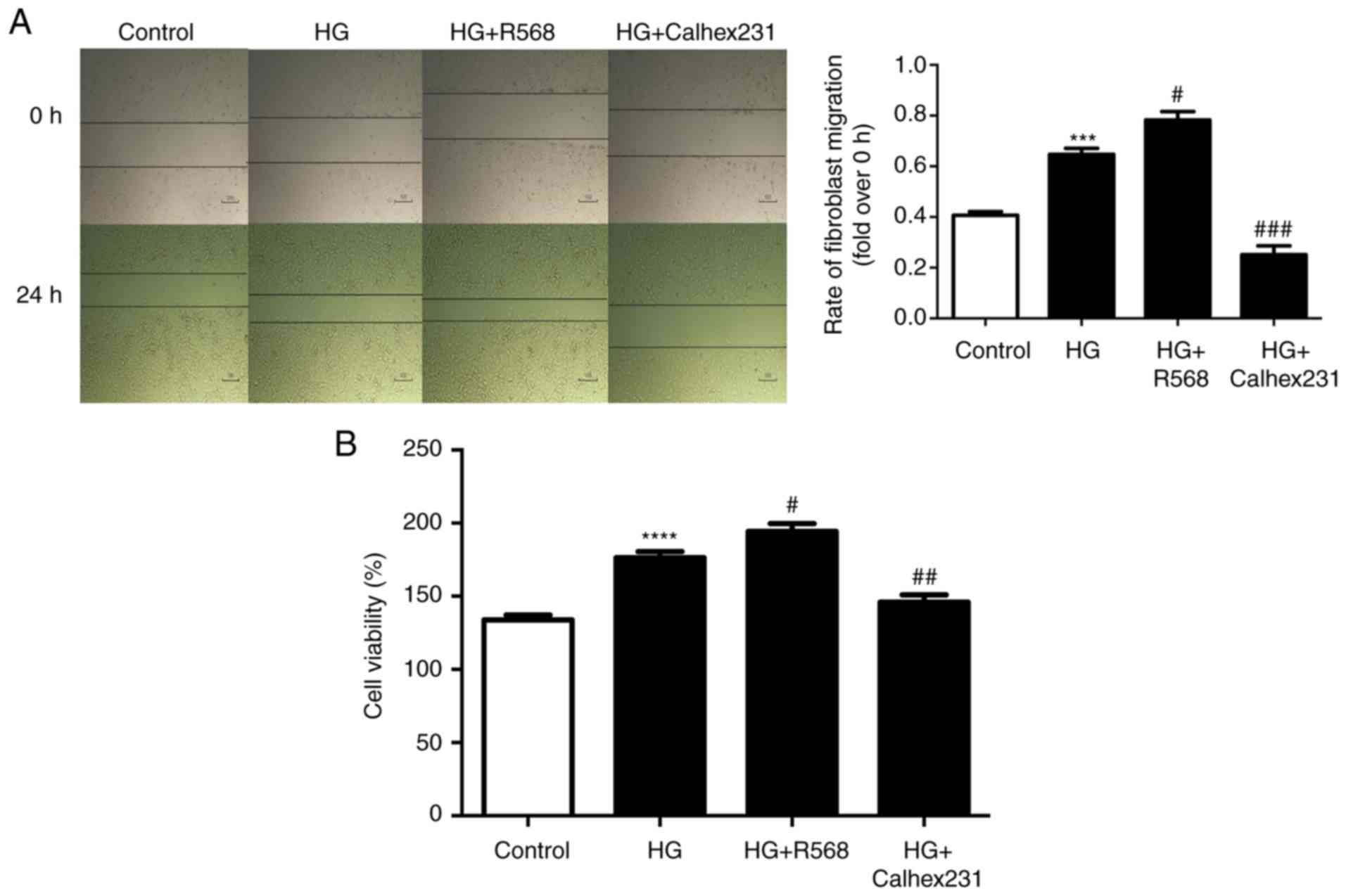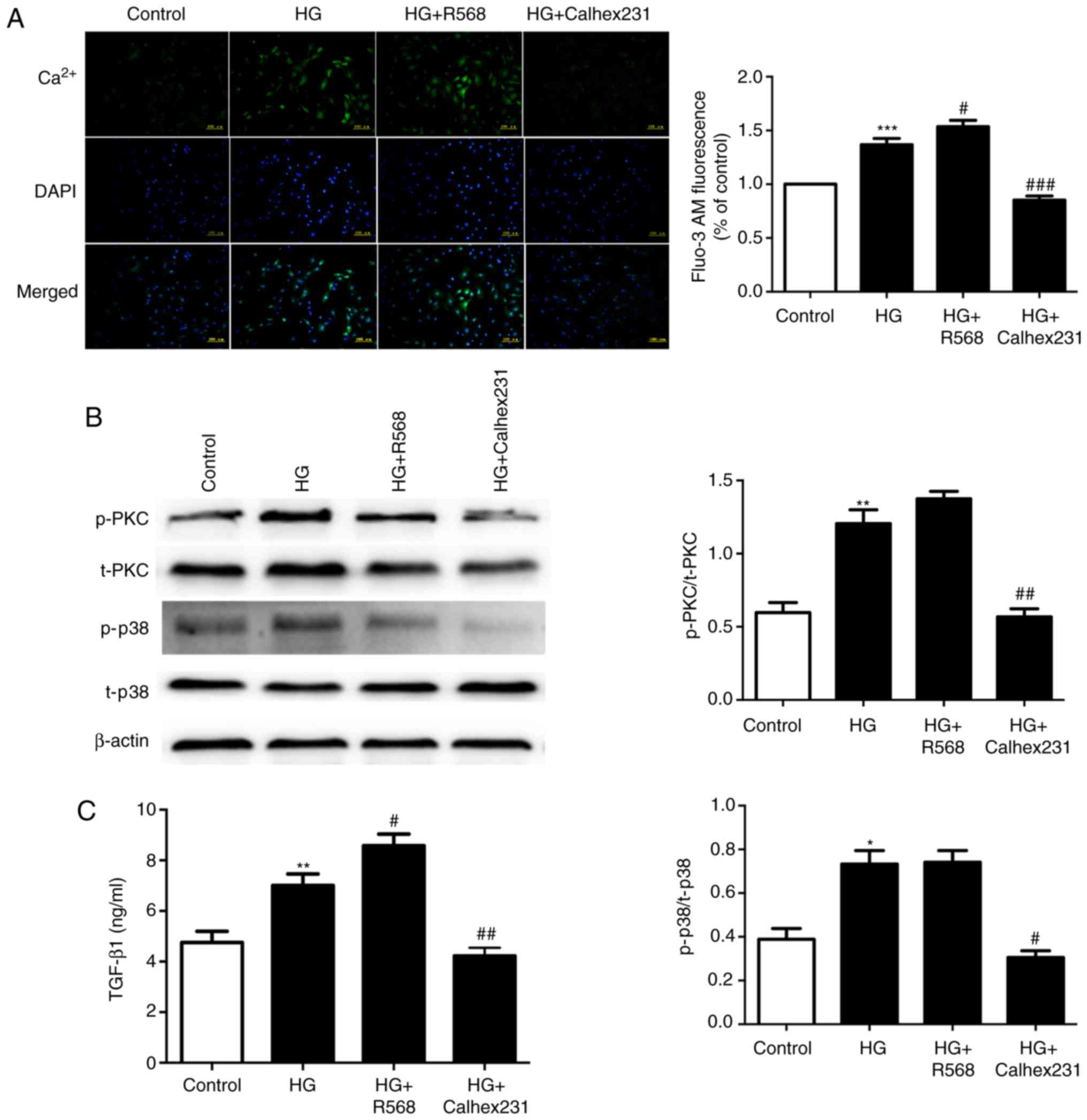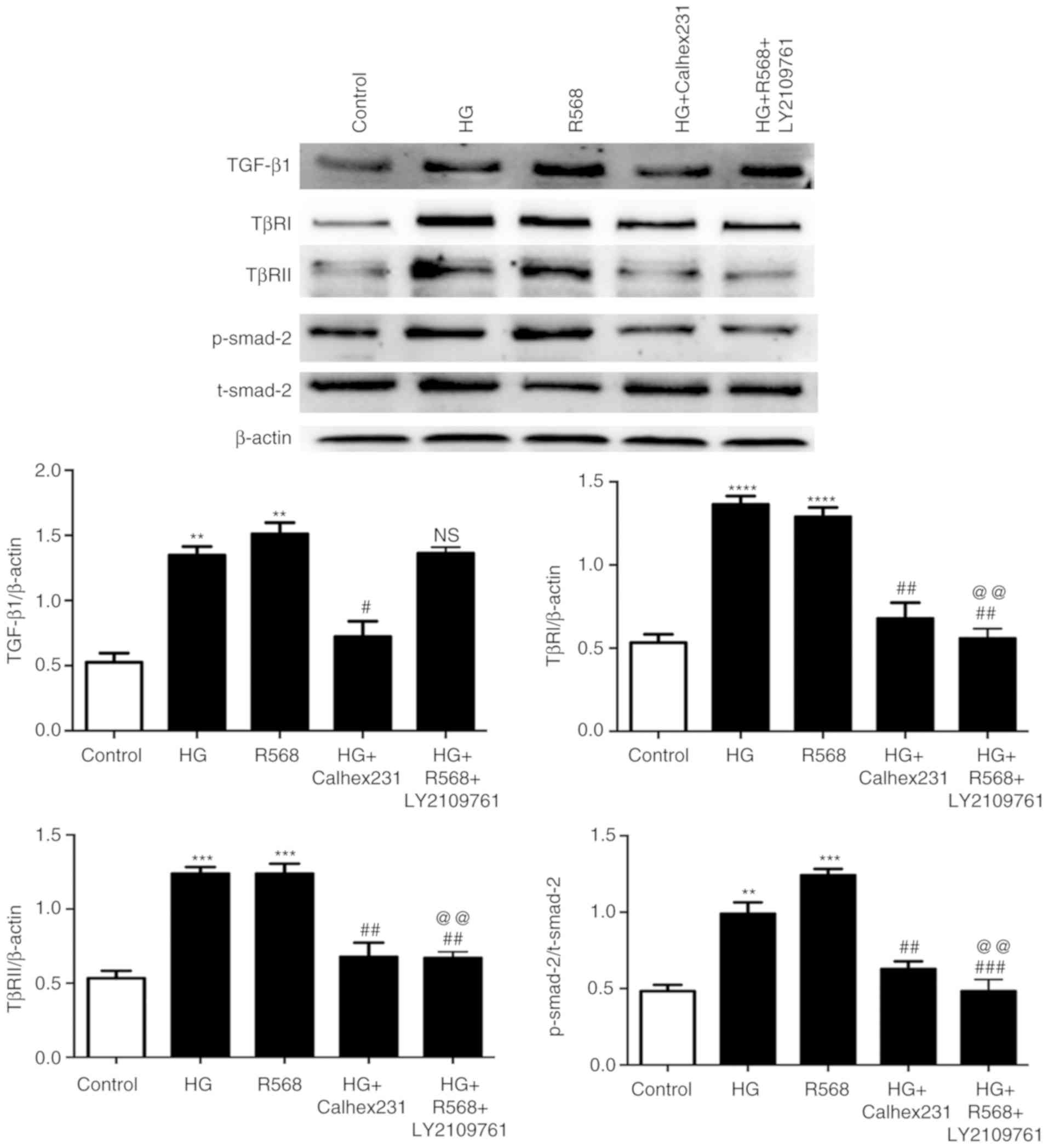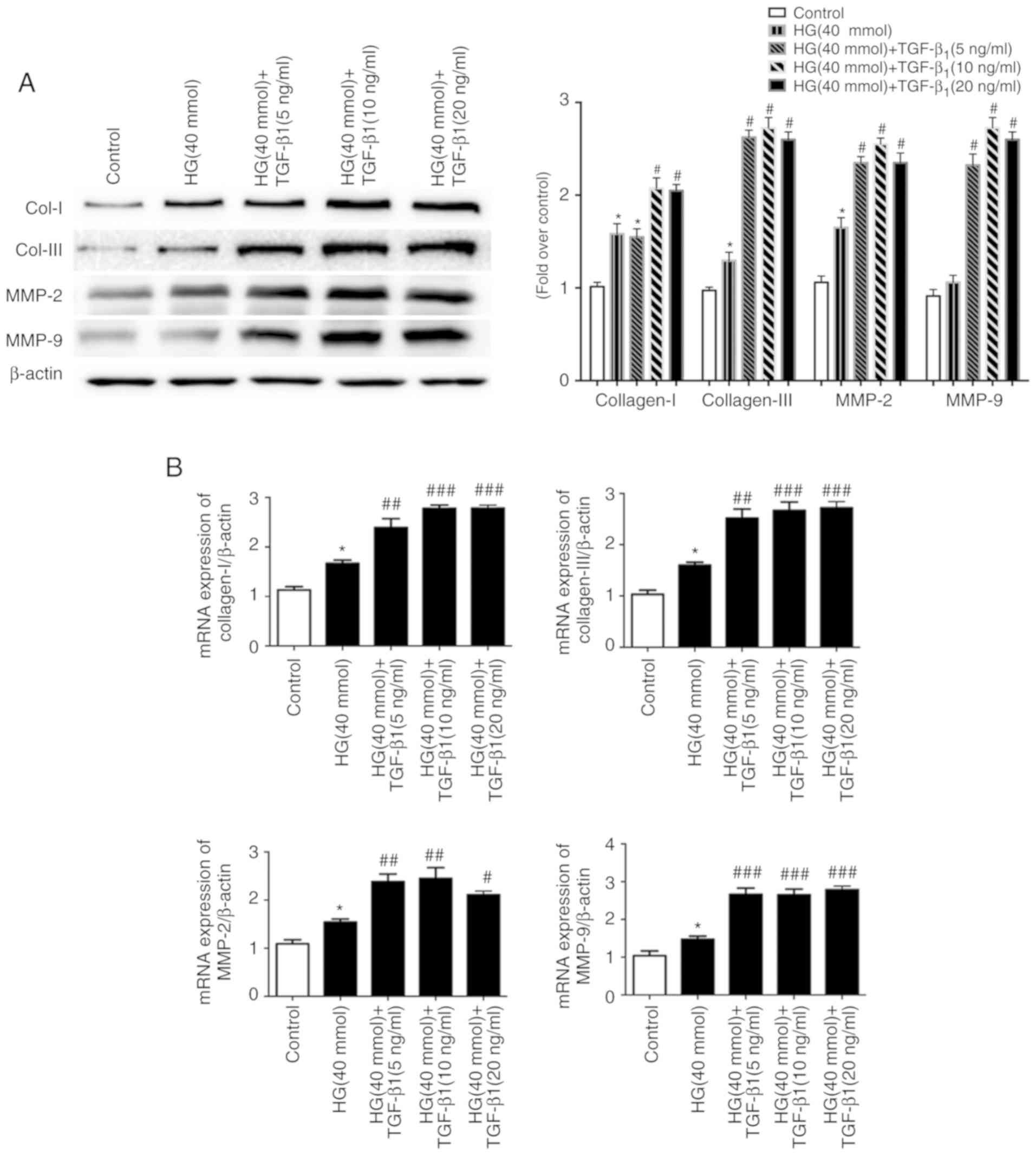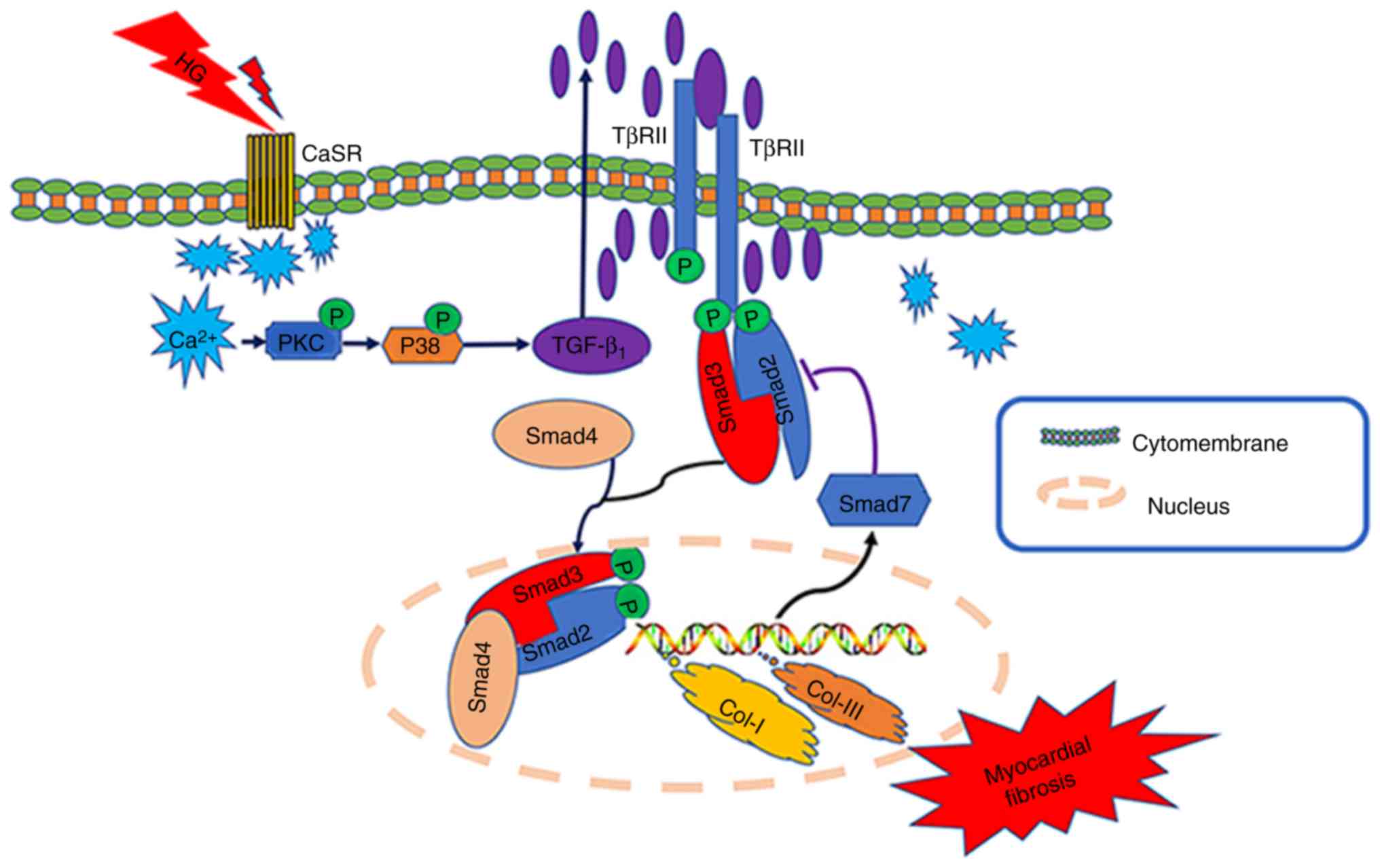|
1
|
Echouffo-Tcheugui JB and Dagogo-Jack S:
Preventing diabetes mellitus in developing countries. Nat Rev
Endocrinol. 8:557–562. 2012. View Article : Google Scholar : PubMed/NCBI
|
|
2
|
Wang X, McLennan SV, Allen TJ, Tsoutsman
T, Semsarian C and Twigg SM: Adverse effects of high glucose and
free fatty acid on cardiomyocytes are mediated by connective tissue
growth factor. Am J Physiol Cell Physiol. 297:C1490–C1500. 2009.
View Article : Google Scholar : PubMed/NCBI
|
|
3
|
Westermeier F, Riquelme JA, Pavez M,
Garrido V, Díaz A, Verdejo HE, Castro PF, García L and Lavandero S:
New Molecular Insights of Insulin in Diabetic Cardiomyopathy. Front
Physiol. 7:1252016. View Article : Google Scholar : PubMed/NCBI
|
|
4
|
Fowlkes V, Clark J, Fix C, Law BA, Morales
MO, Qiao X, Ako-Asare K, Goldsmith JG, Carver W, Murray DB, et al:
Type II diabetes promotes a myofibroblast phenotype in cardiac
fibroblasts. Life Sci. 92:669–676. 2013. View Article : Google Scholar : PubMed/NCBI
|
|
5
|
Cavalera M, Wang J and Frangogiannis NG:
Obesity, metabolic dysfunction, and cardiac fibrosis:
Pathophysiological pathways, molecular mechanisms, and therapeutic
opportunities. Transl Res. 164:323–335. 2014. View Article : Google Scholar : PubMed/NCBI
|
|
6
|
Hutchinson KR, Lord CK, West TA and
Stewart JA Jr: Cardiac fibroblast-dependent extracellular matrix
accumulation is associated with diastolic stiffness in type 2
diabetes. PLoS One. 8:e720802013. View Article : Google Scholar : PubMed/NCBI
|
|
7
|
Tharmalingam S and Hampson DR: The
Calcium-Sensing Receptor and Integrins in Cellular Differentiation
and Migration. Front Physiol. 7:1902016. View Article : Google Scholar : PubMed/NCBI
|
|
8
|
Hendy GN and Canaff L: Calcium-Sensing
Receptor Gene: Regulation of Expression. Front Physiol. 7:3942016.
View Article : Google Scholar : PubMed/NCBI
|
|
9
|
Peng X, Li HX, Shao HJ, Li GW, Sun J, Xi
YH, Li HZ, Wang XY, Wang LN, Bai SZ, et al: Involvement of
calcium-sensing receptors in hypoxia-induced vascular remodeling
and pulmonary hypertension by promoting phenotypic modulation of
small pulmonary arteries. Mol Cell Biochem. 396:87–98. 2014.
View Article : Google Scholar : PubMed/NCBI
|
|
10
|
Xu C, Zhang W, Jiang C, Sun Y and Wang R:
Involvement of calcium sensing receptor in myocardial
ischemia/reperfusion injury and apoptosis. J Mol Cell Cardiol.
42:S80–S81. 2007. View Article : Google Scholar
|
|
11
|
Wang Y, Gao P, Wei C, Li H, Zhang L, Zhao
Y, Wu B, Tian Y, Zhang W, Wu L, et al: Calcium sensing receptor
protects high glucose-induced energy metabolism disorder via
blocking gp78-ubiquitin proteasome pathway. Cell Death Dis.
8:e27992017. View Article : Google Scholar : PubMed/NCBI
|
|
12
|
Dong S, Li G, Zheng D, Wu J, Sun D, Yang
F, Yu X, Li T, Sun A, Liu J, et al: A novel role for the calcium
sensing receptor in rat diabetic encephalopathy. Cell Physiol
Biochem. 35:38–50. 2015. View Article : Google Scholar : PubMed/NCBI
|
|
13
|
Liang CC, Park AY and Guan JL: In vitro
scratch assay: A convenient and inexpensive method for analysis of
cell migration in vitro. Nat Protoc. 2:329–333. 2007. View Article : Google Scholar : PubMed/NCBI
|
|
14
|
Adeghate E: Molecular and cellular basis
of the aetiology and management of diabetic cardiomyopathy: A short
review. Mol Cell Biochem. 261:187–191. 2004. View Article : Google Scholar : PubMed/NCBI
|
|
15
|
Lam S, Verhagen NAM, Strutz F, van der
Pijl JW, Daha MR and van Kooten C: Glucose-induced fibronectin and
collagen type III expression in renal fibroblasts can occur
independent of TGF-β1. Kidney Int. 63:878–888. 2003. View Article : Google Scholar : PubMed/NCBI
|
|
16
|
Spector KS: Diabetic cardiomyopathy. Clin
Cardiol. 21:885–887. 1998. View Article : Google Scholar : PubMed/NCBI
|
|
17
|
Kehlet SN, Willumsen N, Armbrecht G,
Dietzel R, Brix S, Henriksen K and Karsdal MA: Age-related collagen
turnover of the interstitial matrix and basement membrane:
Implications of age- and sex-dependent remodeling of the
extracellular matrix. PLoS One. 13:e01944582018. View Article : Google Scholar : PubMed/NCBI
|
|
18
|
Russo I and Frangogiannis NG:
Diabetes-associated cardiac fibrosis: Cellular effectors, molecular
mechanisms and therapeutic opportunities. J Mol Cell Cardiol.
90:84–93. 2016. View Article : Google Scholar : PubMed/NCBI
|
|
19
|
Loboda A, Sobczak M, Jozkowicz A and Dulak
J: TGF-β1/Smads and miR-21 in Renal Fibrosis and Inflammation.
Mediators Inflamm. 2016:83192832016. View Article : Google Scholar : PubMed/NCBI
|
|
20
|
Yao M, Wang X, Wang X, Zhang T, Chi Y and
Gao F: The Notch pathway mediates the angiotensin II-induced
synthesis of extracellular matrix components in podocytes. Int J
Mol Med. 36:294–300. 2015. View Article : Google Scholar : PubMed/NCBI
|
|
21
|
Olson ER: Signaling mechanisms controlling
the proliferation and differentiation of cardiac fibroblasts
(unpublished PhD thesis). Kent State University, College of
Biomedical Sciences. 2006.
|
|
22
|
Zhang X, Zhang T, Wu J, Yu X, Zheng D,
Yang F, Li T, Wang L, Zhao Y, Dong S, et al: Calcium sensing
receptor promotes cardiac fibroblast proliferation and
extracellular matrix secretion. Cell Physiol Biochem. 33:557–568.
2014. View Article : Google Scholar : PubMed/NCBI
|
|
23
|
Park S, Ranjbarvaziri S, Lay FD, Zhao P,
Miller MJ, Dhaliwal JS, Huertas-Vazquez A, Wu X, Qiao R, Soffer JM,
et al: Genetic Regulation of Fibroblast Activation and
Proliferation in Cardiac Fibrosis. Circulation. 138:1224–1235.
2018. View Article : Google Scholar : PubMed/NCBI
|
|
24
|
Du G, Fischer BE, Voss KO, Becker G,
Taucher-Scholz G, Kraft G and Thiel G: The absence of an early
calcium response to heavy-ion radiation in Mammalian cells. Radiat
Res. 170:316–326. 2008. View Article : Google Scholar : PubMed/NCBI
|
|
25
|
Liu W, Wang X, Mei Z, Gong J, Huang L, Gao
X, Zhao Y, Ma J and Qian L: BNIP3L promotes cardiac fibrosis in
cardiac fibroblasts through [Ca2+]i-TGF-β-Smad2/3 pathway. Sci Rep.
7:19062017. View Article : Google Scholar : PubMed/NCBI
|
|
26
|
Zhang WH, Fu SB, Lu FH, Wu B, Gong DM, Pan
ZW, Lv YJ, Zhao YJ, Li QF, Wang R, et al: Involvement of
calcium-sensing receptor in ischemia/reperfusion-induced apoptosis
in rat cardiomyocytes. Biochem Biophys Res Commun. 347:872–881.
2006. View Article : Google Scholar : PubMed/NCBI
|
|
27
|
Li GW, Miao HZ, Bo L, Wang GZ, Jin L, Lin
Y, Deng ZH and Xiao W: Calcium-sensing receptor modulates pulmonary
artery tension through G-protein-PLC-IP_3 pathways. Chin J
Pathophysiol. 31:2015.(In Chinese).
|
|
28
|
Jabłońska-Trypuć A, Matejczyk M and
Rosochacki S: Matrix metalloproteinases (MMPs), the main
extracellular matrix (ECM) enzymes in collagen degradation, as a
target for anticancer drugs. J Enzyme Inhib Med Chem. 31 (Suppl
1):177–183. 2016. View Article : Google Scholar : PubMed/NCBI
|
|
29
|
Nüchel J, Ghatak S, Zuk AV, Illerhaus A,
Mörgelin M, Schönborn K, Blumbach K, Wickström SA, Krieg T, Sengle
G, et al: TGFB1 is secreted through an unconventional pathway
dependent on the autophagic machinery and cytoskeletal regulators.
Autophagy. 14:465–486. 2018. View Article : Google Scholar : PubMed/NCBI
|
|
30
|
Wei Y, Meng T and Sun C: Protective effect
of diltiazem on myocardial ischemic rats induced by isoproterenol.
Mol Med Rep. 17:495–501. 2018.PubMed/NCBI
|
|
31
|
Ryu JM, Lee MY, Yun SP and Han HJ: High
glucose regulates cyclin D1/E of human mesenchymal stem cells
through TGF-beta1 expression via Ca2+/PKC/MAPKs and PI3K/Akt/mTOR
signal pathways. J Cell Physiol. 224:59–70. 2010.PubMed/NCBI
|
|
32
|
Shi BH, Zong-Pei XU and Fan GW: The
research progress on treatment of myocardial fibrosis by regulating
TGF-β1/Smads pathway. Zhongguo Yaolixue Tongbao. (In Press).
|
|
33
|
Lan HY: Diverse roles of TGF-β/Smads in
renal fibrosis and inflammation. Int J Biol Sci. 7:1056–1067. 2011.
View Article : Google Scholar : PubMed/NCBI
|
|
34
|
Duran J, Troncoso MF, Lagos D, Ramos S,
Marin G and Estrada M: GDF11 Modulates Ca2+-Dependent Smad2/3
Signaling to Prevent Cardiomyocyte Hypertrophy. Int J Mol Sci.
19:1333–1342. 2018. View Article : Google Scholar :
|















